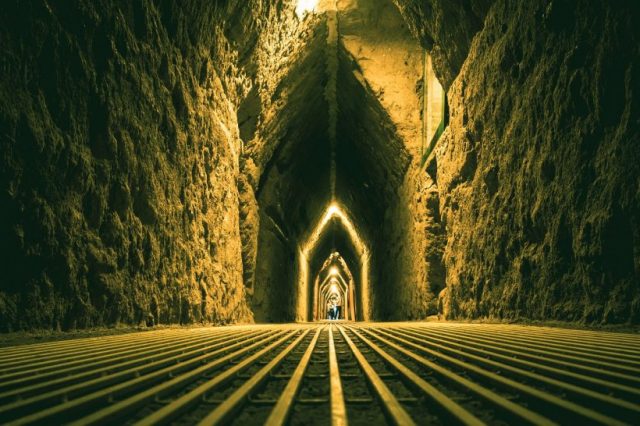Obviously, the pyramids were not built from top to bottom, we know that for certain. But we do not really know how the ancients managed to pull of such a massive undertaking. There are no documents that have been left behind by the builders and all we can do is make a wild guess.
The Pyramids at Giza in Egypt are perhaps one of the greatest structures built in ancient times. The Great Pyramid of Giza, also known as Khufu’s Pyramid or Khufu’s Horizon (its ancient name), is a marvel of ancient engineering and architecture. It is the only standing ancient wonder of the world and has survived thousands of years of earthquakes, climate changes, and rise and fall of civilizations.
For 3,800 years, the Great Pyramid at Giza remained the tallest manufactured structure in the world. Built out of limestone and granite blocks, the Great Pyramid of Giza was also covered by finely polished limestone casing stones that made the pyramid shine in ancient times.
Although experts argue that more unknown chambers may reside in its interior, three known chambers have been found so far inside the pyramid.
Egyptologists believe the structure was built to serve as a tomb for the Fourth Dynasty Egyptian pharaoh Khufu (often Hellenized as “Cheops“), although no evidence has been found to date to support this theory.
Khufu’s vizier, a man called Hemiunu (also called Hemon), is believed by some to be the architect of the Great Pyramid.
A massive undertake
As noted by Janey Levy in the Book, The Great Pyramid of Giza: Measuring Length, Area, Volume, and Angles: “at construction, the Great Pyramid was originally 280 Egyptian Royal cubits tall (146.5 meters (480.6 ft)), but with erosion and absence of its pyramidion, its present height is 138.8 meters (455.4 ft). Each base side was 440 cubits, 230.4 meters (755.9 ft) long. The mass of the pyramid is estimated at 5.9 million tons. The volume, including an internal hillock, is roughly 2,500,000 cubic meters (88,000,000 cu ft).”
Scholars argue that the pyramid consists of an estimated 2.3 million blocks, most of which are thought to have originated from quarries near the construction site.
However, the largest and heaviest stones used in the pyramid’s construction and located in the King’s Chamber were quarried and transported from Aswan, more than 800 kilometers away from the pyramid. The massive blocks range in weight between 25 and 80 tons.
And although it remains unclear as to how exactly the massive blocks were transported and quarried, Egyptologists argue that the ancient Egyptians are thought to have cut stone blocks by hammering pieces of wood into them and soaking them with water.
As the wooden wedges absorbed the liquid, the material would expand, cracking the rock.
They were then ‘carried’ by boar either up or down the Nile River to the pyramid.
Experts estimate that as many as 5.5 million tons of limestone, 8,000 tons of granite (imported from Aswan), and 500,000 tons of mortar were used in the construction of the Great Pyramid.
But despite knowing much about the pyramid, its exact building techniques and incredibly precise design elements have baffled experts for centuries.
In other words, we are still unsure as to how the pyramid was built.
Did the ancient builders drag, lift, or roll the massive blocks into position? Did they use slave labor as the ancient Greeks proposed? Or is it possible that the Pharaoh hired tens of thousands of workers to build the massive monument?
One documentary, available on YouTube, may provide some of the answers we have long been looking for.
Is this how the pyramids were built?
The video documentary goes through methods the Egyptians may have used to build the structure.
Did the builders use massive ramps? If so, where are the ramps today? Why have we not found evidence of their existence? Indeed the ancient Egyptians must have used several ramps and not just one?
But then again, how could materials such as wooden rollers and mud bricks carry the strain put on them by massive blocks of stone weighing several tons.
If slave labor was used, how did the ancient project managers keep morale high as thousands of men dragged the massive blocks of stone across the scorching desert?
The documentary proposes the so-called water-shaft theory, where the author proposes that the massive blocks of stone were floated towards the pyramid in intricately built water shafts.
Check out the videos:
Join the discussion and participate in awesome giveaways in our mobile Telegram group. Join Curiosmos on Telegram Today. t.me/Curiosmos





